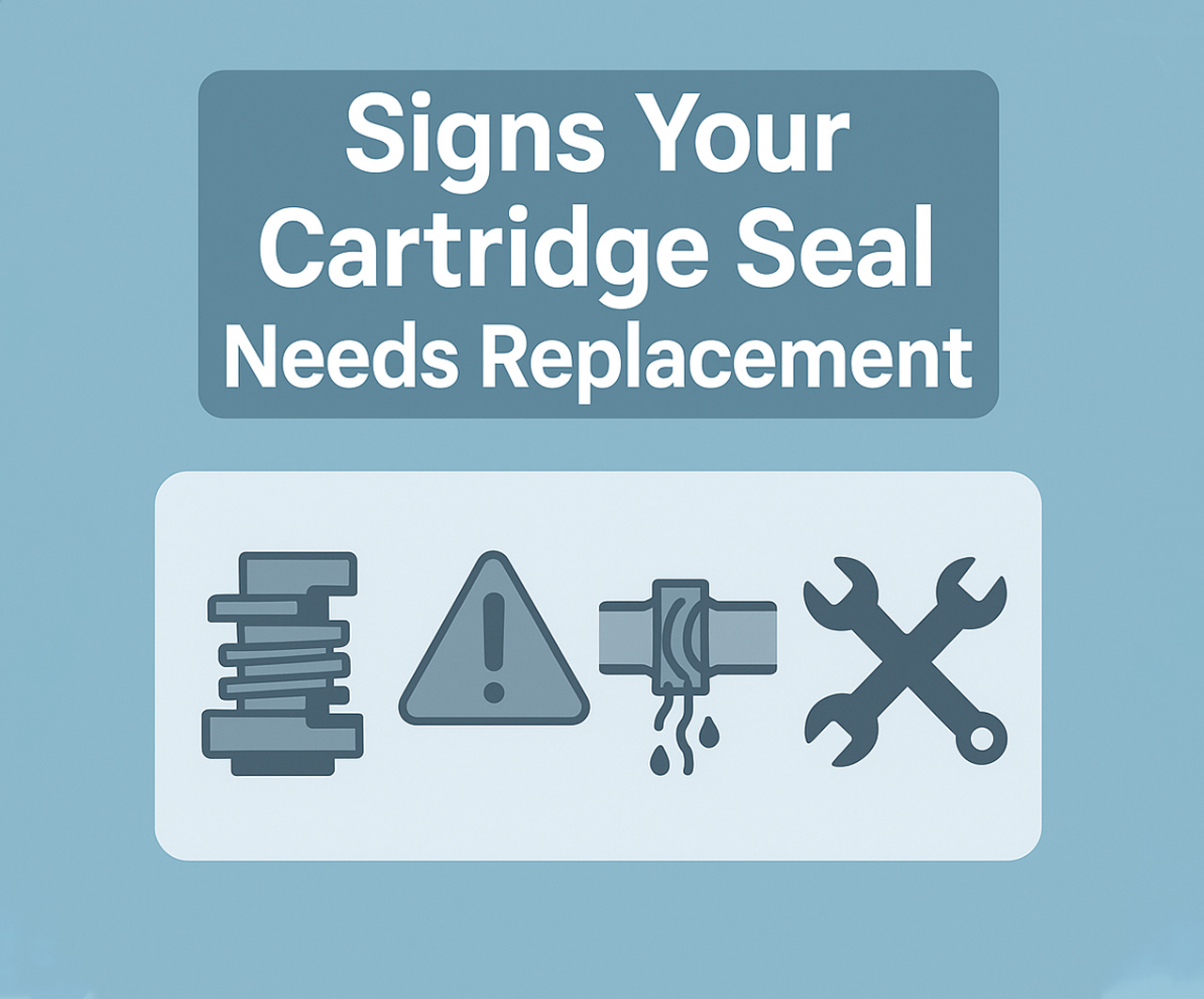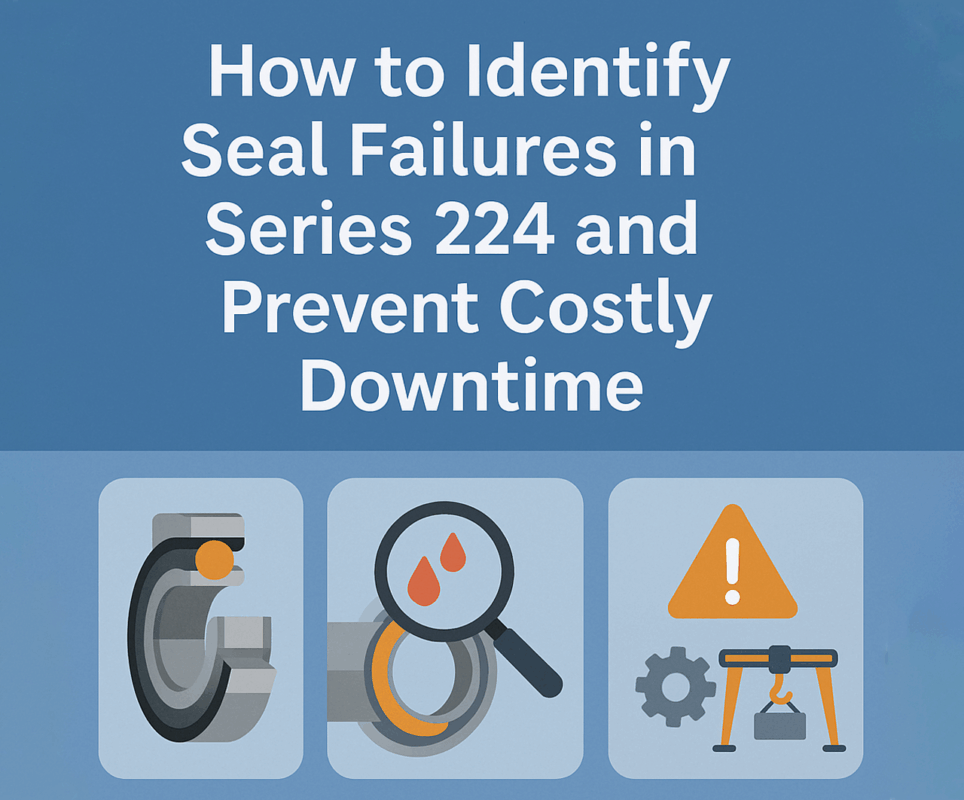Routine inspections often miss the subtle yet critical signs that cartridge mechanical seal types, cartridge seal pump, and cartridge type mechanical seal components are reaching the end of their life. While these sealed units are designed for durability and performance, every cartridge seal has a lifecycle—and ignoring the warning signs can lead to catastrophic equipment failure, unexpected downtime, and high repair costs.
This guide will help you identify early indicators that your seal may need replacement, how to diagnose the issue, and what to consider when selecting a new cartridge type mechanical seal. Know more..
What Is a Cartridge Seal?
Before we dive into failure indicators, let’s revisit what a cartridge type mechanical seal actually is. Cartridge seals are self-contained sealing assemblies, typically pre-assembled by the manufacturer for easier installation and improved reliability. These units include the seal faces, gland plate, sleeve, and hardware—eliminating the need for precise on-site alignment.
Cartridge mechanical seal types are used in a wide range of pump and mixer systems. From food processing to chemical plants, the cartridge seal pump design helps minimize leakage, simplify maintenance, and boost performance.
Common Causes of Cartridge Seal Wear
- Thermal expansion: Excessive heat distorts seal faces.
- Dry running: Operating without sufficient lubrication burns surfaces.
- Chemical attack: Incompatible fluids degrade elastomers and faces.
- Misalignment: Improper installation or shaft runout accelerates wear.
- Overpressure: Exceeding design specs crushes components.
Even the most robust cartridge type mechanical seal can fail if the application or installation is incorrect.
Early Warning Signs Your Cartridge Seal Needs Replacement
1. Visible Leakage Around the Seal Gland
One of the clearest signs is fluid appearing around the cartridge seal pump flange. While minor weeping can occur during temperature fluctuations, persistent leakage indicates seal face wear or elastomer failure.
Monitor the volume and frequency of leakage. Increasing puddles often signal an impending failure of your cartridge mechanical seal types.
2. Unexpected Vibrations or Noise
A properly installed cartridge type mechanical seal runs quietly. If you begin hearing grinding, whistling, or vibrations from the seal area, it likely points to:
- Misalignment
- Debris between seal faces
- Worn rotating components
Unusual noise is always worth a shutdown and inspection.
3. Increased Pump Power Consumption
A declining cartridge seal pump may require more power to achieve the same output. This could be due to:
- Higher drag from degraded seals
- Internal leakage creating pressure drops
- Friction from dry-running or contaminated faces
Track performance baselines monthly to spot energy use spikes.
4. Temperature Surges in the Seal Chamber
Seal faces are designed to operate within a specific thermal range. Excessive heat can warp the components of your cartridge type mechanical seal, leading to face separation and leakage.
Check for:
- Hot spots on the pump housing
- Overheated discharge temperatures
- Rapid fluid vaporization
Infrared thermography is a good tool for non-contact monitoring.
5. Excessive Face Wear or Scoring
During inspections, look at the seal faces for:
- Deep grooves
- Fractures
- Pitting or erosion
These are signs of poor lubrication or abrasive contaminants. Most cartridge mechanical seal types will fail if face integrity is lost.
6. Rapid Pressure Decay in the System
If you notice a pressure drop or pump can’t maintain discharge levels, your cartridge seal pump may be bypassing fluid past the seal faces.
Test static and dynamic pressures regularly and compare to equipment baselines.
7. Chemical Swelling of Elastomers
Elastomer parts inside your cartridge type mechanical seal can swell, crack, or harden when exposed to incompatible fluids.
If you find bulging O-rings or distorted gaskets during maintenance, a chemical mismatch is likely the cause.
Diagnosing the Root Cause
Don’t just replace a failed seal—investigate why it failed. Ask:
- Was the cartridge seal pump operating outside its designed range?
- Were installation procedures followed exactly?
- Has process fluid composition changed?
- Were any recent maintenance activities incomplete?
Using failure analysis tools like borescope inspections and fluid sampling can reveal the bigger picture.
When to Replace vs. Rebuild
Sometimes, it’s tempting to recondition an old cartridge type mechanical seal with new faces and elastomers. But rebuilding is only recommended when:
- The metal hardware is intact
- The shaft sleeve is undamaged
- Alignment can be reestablished precisely
In most high-performance environments, especially with aggressive chemicals or critical uptime, replacing the cartridge mechanical seal types outright is safer.
Selecting the Right Replacement Seal
When choosing a new cartridge seal pump unit, match the following parameters:
- Shaft diameter and speed
- Operating pressure and temperature
- Fluid compatibility
- Duty cycle (continuous or intermittent)
- Environmental factors (abrasive, corrosive, etc.)
Also consider upgraded materials. Many cartridge mechanical seal types are now available with:
- Silicon carbide faces
- PTFE bellows
- Alloy 20 or Hastelloy hardware
Advanced materials extend service life significantly.
Best Practices for Cartridge Seal Longevity
To get the most from your cartridge type mechanical seal:
- Use a proper flush plan to cool and clean faces
- Avoid dry starts
- Follow manufacturer’s torque and alignment instructions
- Keep detailed maintenance logs
Modern sensors and IoT tools can help monitor pressure, temperature, and run time for each cartridge seal pump unit.
Common Industry Mistakes to Avoid
- Skipping Initial Alignment Checks Even pre-assembled cartridge mechanical seal types need shaft and gland verification.
- Ignoring Flush Plan Requirements Incorrect or missing flush setups can destroy seals within days.
- Overtightening the Gland Bolts This can distort seal geometry, causing uneven wear.
- Assuming All Seals Are Universal One size doesn’t fit all. Always verify part numbers.
- Not Storing Seals Properly Humidity and temperature can degrade cartridge type mechanical seal elastomers even before use.
Industry Applications That Demand Vigilant Seal Monitoring
- Petrochemical: Failure can trigger environmental hazards.
- Pulp & Paper: Fiber-rich slurries accelerate face wear.
- Pharmaceutical: GMP demands 100% seal integrity.
- Food & Beverage: Sanitary compliance leaves no room for leaks.
In each of these sectors, predictive maintenance and timely cartridge seal pump replacement is non-negotiable.
Final Thoughts
Every cartridge type mechanical seal has a service life. Ignoring the early signs of failure can lead to far greater problems, from equipment damage to regulatory violations. By watching for key indicators—like leakage, vibration, temperature spikes, and material wear—you can stay ahead of seal issues.
Whether you’re running a chemical plant, food processing line, or water treatment system, the integrity of your cartridge seal pump directly affects uptime and operational safety. Stay proactive, perform regular inspections, and when the time comes, replace your cartridge mechanical seal types with precision, not panic.
A smart replacement today can save you a shutdown tomorrow.



